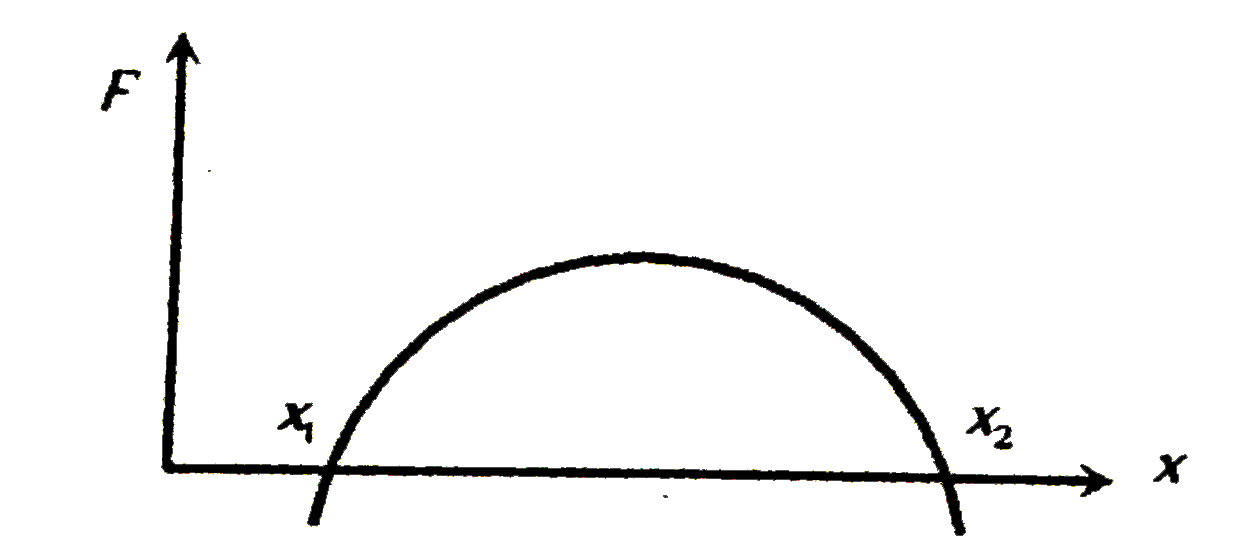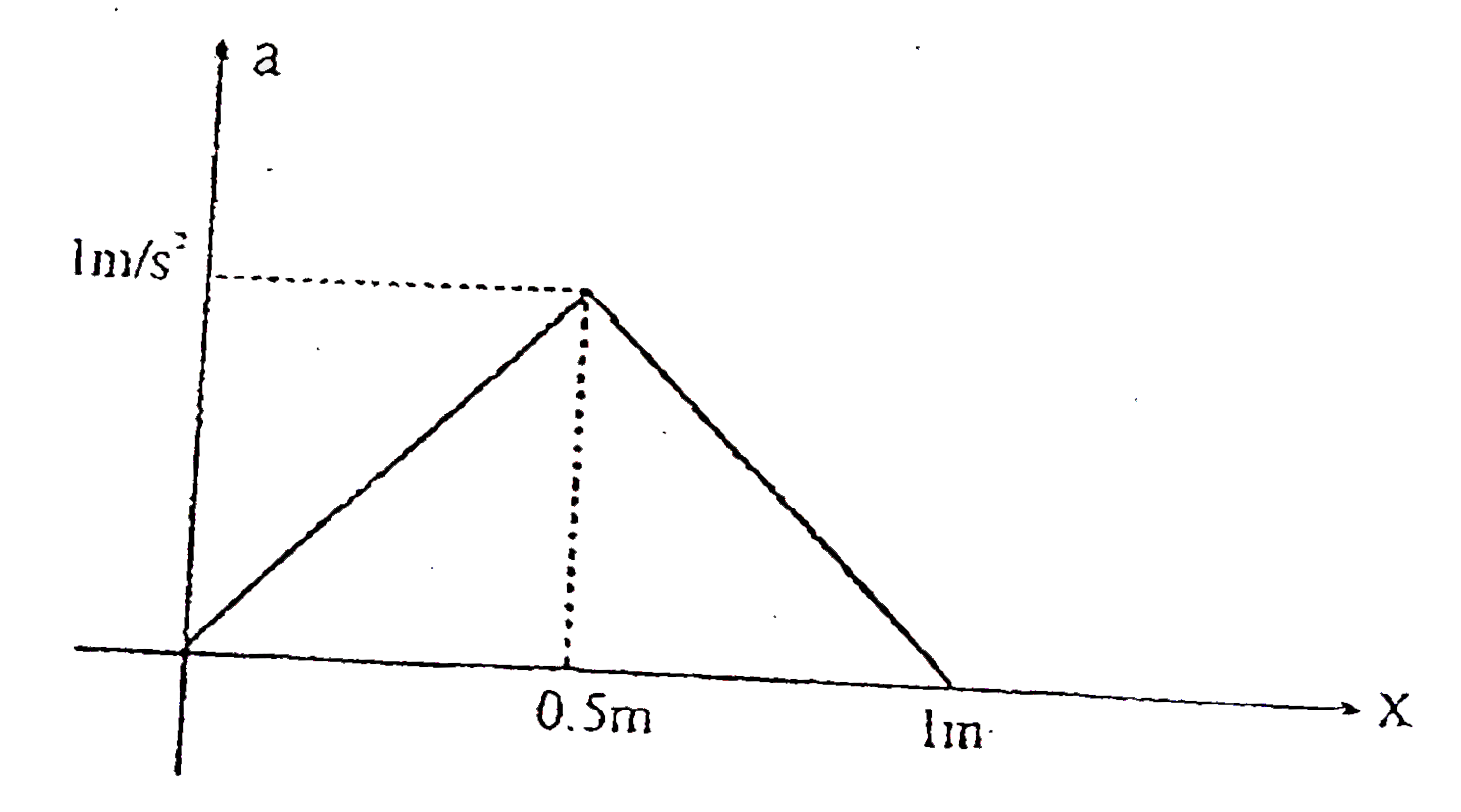If v is the velocity of a body moving along x-axis, then acceleration of body is
dvdx
vdvdx
xdudx
vdxdv
The correct Answer is:B
To find the acceleration of a body moving along the x-axis when its velocity is given as v, we can follow these steps:
1. Understand the Definitions:
- Velocity (v) is defined as the rate of change of displacement with respect to time. Mathematically, it is expressed as:
v=dxdt
- Acceleration (a) is defined as the rate of change of velocity with respect to time, which can be expressed as:
a=dvdt
2. Apply the Chain Rule:
- To express acceleration in terms of displacement, we can use the chain rule of differentiation. We can write:
a=dvdt=dvdx⋅dxdt
- Here, dxdt is the velocity v.
3. Substitute the Velocity:
- Substitute v for dxdt in the equation:
a=dvdx⋅v
4. Final Expression for Acceleration:
- Therefore, the acceleration of the body can be expressed as:
a=v⋅dvdx
Final Answer:
The acceleration of the body moving along the x-axis is given by:
a=v⋅dvdx
---
- Velocity (v) is defined as the rate of change of displacement with respect to time. Mathematically, it is expressed as:
v=dxdt
- Acceleration (a) is defined as the rate of change of velocity with respect to time, which can be expressed as:
a=dvdt
- To express acceleration in terms of displacement, we can use the chain rule of differentiation. We can write:
a=dvdt=dvdx⋅dxdt
- Here, dxdt is the velocity v.
- Substitute v for dxdt in the equation:
a=dvdx⋅v
- Therefore, the acceleration of the body can be expressed as:
a=v⋅dvdx
The acceleration of the body moving along the x-axis is given by:
a=v⋅dvdx
Topper's Solved these Questions
- MOTION IN A STRAIGHT LINEBook:AAKASH INSTITUTEChapter:MOTION IN A STRAIGHT LINEExercise:ASSIGNMENT (SECTION - B)
Explore 33 Videos
- MOTION IN A STRAIGHT LINEBook:AAKASH INSTITUTEChapter:MOTION IN A STRAIGHT LINEExercise:ASSIGNMENT (SECTION - C)
Explore 37 Videos
- MOTION IN A STRAIGHT LINEBook:AAKASH INSTITUTEChapter:MOTION IN A STRAIGHT LINEExercise:EXERCISE
Explore 30 Videos
- MOTION IN A PLANEBook:AAKASH INSTITUTEChapter:MOTION IN A PLANEExercise:Assignement section -J (Aakash Challengers Questions)
Explore 4 Videos
- MOTION IN STRAIGHT LINEBook:AAKASH INSTITUTEChapter:MOTION IN STRAIGHT LINEExercise:Assignment (SECTION - J)
Explore 2 Videos
Similar Questions
.A body moving with some initial velocity and having uniform acceleration attains a final velocity vm/s after travelling xm .If its final velocity is v = √180−7x , ,find the acceleration of the body
View SolutionA particle starts with some initial velocity with an acceleration along the direction of motion. Draw a graph depicting the variation of velocity (v) along y-axis with the variation of displacement(s) along x-axis.
View Solution
Knowledge Check
The force acting on a body moving along x -axis varies with the position of the particle as shown in the fig. The body is in stable equilibrium at.
 Ax=x1Bx=x2Cboth x1 and x2Dneither x1 nor x2
Ax=x1Bx=x2Cboth x1 and x2Dneither x1 nor x2The force acting on a body moving along x-axis varies with the position of the particle shown in the figure. The body is in stable equilibrium at
 . Ax=x1Bx=x2Cboth x1 and x2Dneither x1 nor x2
. Ax=x1Bx=x2Cboth x1 and x2Dneither x1 nor x2A body is moving with uniform acceleration. Its 'velocity
Awill be increasing,Bwill be decreasing,Cwill be uniform,Dwill increase first and decrease afterward.
A body moving with some initial velocity and having uniform acceleration attains a final velocity v m/s after travelling x m. If its final velocity is v = √180−7x, find the acceleration of the body.
View SolutionThe velocity v of a body moving along a straight line varies with time t as v=2t2e−t, where v is in m/s and t is in second. The acceleration of body is zero at t =
View SolutionA body is moving with a velocity 5m/s along a striaght line.A force of 10N is applied to the body perpendicular to the line of motion. If the body is of mass 2kg, then the acceleration of the body along the initial straight line of motion is :
View SolutionAt time t, the position of a body moving along the x - axis is x=t3−6t2+9tm The deceleration of the body at 1 s is
View SolutionA Body intially at rest, starts moving along x−axis in such a way so that its acceleration vs displacement plot is as shown in figure. The maximum velocity of particle is :−

View Solution
